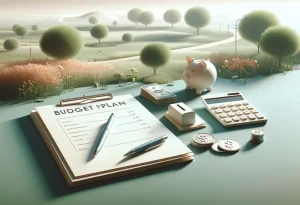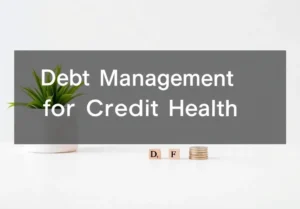Money slips through fingers like sand, and before you know it, the month’s budget is gasping for air. With bills to pay and dreams to save for, the struggle to keep your cash in check is real – and relentless.
Discover how the age-old envelope system can be your modern-day superhero in the epic quest for financial control and peace of mind.
Quick Takeaways:
- Divide your budget into physical envelopes for different expenses to control spending and avoid overspending in any category.
- Use cash for payments to lessen the psychological ease of overspending that comes with card use, enhancing your budgeting discipline.
- Regularly track and adjust your envelope contents to reflect real spending habits, and celebrate small victories to maintain motivation.
What Is the Envelope System and How Can It Help You?
The envelope system is a straightforward, yet highly practical approach to budgeting. It’s like divvying up your dinner plate—with each slice of your financial pie having its own envelope.
Here’s how it works: you divide your cash into different envelopes, each one earmarked for specific spending categories, like groceries, entertainment, or bills.
This tactile method brings budgeting to life. There’s something about seeing those dollar bills and physically allocating them that really drives home the value of your hard-earned cash. It encourages you to be intentional with your spending, and when an envelope empties, it sends a clear signal: it’s time to stop spending in that category, or shuffle funds if it’s an absolute must.
By putting a cap on each category, the envelope system prevents you from overspending. It’s a game of financial Tetris that allows you to fit your expenses perfectly within your income. And it’s this simple elegance that helps people get a firm grip on their daily expenses, offering a clear view of where their money is going.
Why Is Cash King When It Comes to Budgeting?
You might be wondering, with all the tech at our fingertips, why stick to paper money for budgeting? Here’s the kicker: cash has a psychological edge. Studies suggest that folks are likely to spend less when they pay with cash instead of swiping a card – it’s a phenomenon called the “pain of paying.”
That twinge you feel when you hand over a $20 bill is real and powerful. Cash transactions make you think twice because they create a more visceral connection to your spending. When cash leaves your hand, you see your resources dwindling, and it’s harder to ignore budget boundaries.
In comparison, cards can feel like an endless tab that only hits you once the bill comes around. So while cash might seem old school, it’s this ‘in-your-face’ honesty about spending that can turn the tide on your budgeting battle, helping you stay the course towards your financial goals.
How Do You Set Up Your Envelope System From Scratch?
Setting up an envelope system might sound like a throwback to a simpler time, but don’t be fooled—it’s as relevant as ever. Here’s how you can get the ball rolling:
-
Identify Your Spending Categories: Start with the basics—rent, food, utilities, transportation, and so on. Think of all the areas where your money goes, and don’t forget the occasional splurge or coffee run.
-
Create Your Envelopes: Grab a stack of envelopes and write a category on each. If you’re feeling fancy, use different colors or stickers to easily distinguish them.
-
Determine Your Budget Amounts: This is crucial. Look over your past expenses to estimate a realistic budget for each category. It’s not about wishful thinking; it’s about cold, hard numbers.
-
Fill ‘Em Up: After payday, divvy up your cash among the envelopes. This is a ritual that symbolizes your commitment to your budget.
-
Track As You Go: Each time you pull cash from an envelope, jot down what you spent it on. This isn’t just busywork—it’ll provide valuable insights over time and keep you honest.
-
Adjust As Needed: If an envelope runs out of funds too soon, it’s time to reassess and adjust either your spending or your budget.
The little-known secret? Flexibility. Too many people think the envelope system is rigid, but it’s quite the opposite. If you find that you’ve over- or under-estimated a category, shuffle your allocations to match your real-life spending habits. This isn’t about sticking to set rules; it’s about crafting a system that fits like a glove.
Remember, the envelope system is not a financial straitjacket; it’s a tool for awareness and control. It creates a budget that breathes with your lifestyle. So as you’re tucking those bills into their new paper homes, know that you’re taking a bold step toward financial fitness. Keep your eyes peeled for our next move, because your journey to savvy spending is just revving up.
What Can You Do If You Blow Your Budget?
Picture this: You’ve dutifully divided your cash into envelopes, but a week into the month, your dining out envelope is as empty as a politician’s promises before election day. Don’t worry, we’re all human, and budgets are living documents meant to be adjusted as life happens. Here’s what to do when you’ve overspent:
-
Borrow Wisely: If you’ve overspent in one category, you can borrow from another, less critical envelope. But, and here’s the kicker, you must plan to replenish it. That might mean cutting back on another category next month. It’s a bit like robbing Peter to pay Paul, but as long as Peter gets paid back soon, it’s all good.
-
Adjust on the Fly: Is a surprise expense threatening to derail your budget train? If it’s a genuine need, adjust your budget. But remember, adjustments require compromise. Identify what’s less essential this month and trim the fat.
-
Emergency Fund to the Rescue: If you have one, use your emergency fund for unexpected expenses, not your daily spending envelopes. That way, you’re not scrambling or pulling from other areas of your budget.
-
Reflect and Learn: Look at what led to the overspend. Were you unrealistic with your initial budgeting, or did a special occasion tempt you? Reflecting isn’t about beating yourself up; it’s about learning for next time.
-
Plan Ahead: Start stashing a little extra into a “Miscellaneous” envelope each month. This isn’t for splurging—it’s your budget’s shock absorber for those fiscal potholes.
Remember, if you’re tapping into another envelope, be honest with yourself about whether it’s a need or a want. Owning up to that distinction can be tough but crucial.
How Can You Stick to the Envelope System Long-Term?
Now, you’re in it for the long haul, and the road ahead can seem a bit daunting. Sticking with the envelope system requires patience, resilience, and a sprinkle of creativity. Here’s how you can keep the momentum going:
-
Celebrate the Small Wins: Just as a pat on the back feels good, so does celebrating your budgeting wins. Maybe you stayed under budget in a tough category—woohoo! Treat yourself to a modest reward that doesn’t break the bank, like a home movie night.
-
Keep Your Eyes on the Prize: Visual reminders of your goals, like pictures of your dream vacation or a new car, can help you remember why you’re passing on that pricey latte.
-
Go Digital: If you’re struggling with the physical cash aspect, consider digital envelopes, using budgeting apps that mimic the envelope system. This approach can marry the system’s principles with the convenience of card payments.
-
Get Supportive Sidekicks: Make it social. Have friends who are budgeting savvy? Create a support group where you can share tips, challenges, and victories.
-
The Extra Mile: (Here’s your unique tip!) Get into couponing or cashback apps. While most people know about these, few integrate them as part of their envelope system. Designate all coupons and cashback to be funneled right back into your envelopes. It keeps your spending lean while giving you a mini windfall now and then.
-
Adjust and Innovate: No system is set in stone. As you roll with the envelope system, you might find that some tweaks work better for you. Don’t be afraid to innovate your approach.
The key to long-term success with the envelope system is to keep it flexible and forgiving. Life can be as unpredictable as a plot twist in a bestselling thriller. Being too rigid with your money can snap the bank, just like being too tight on a rope. So be the savvy budgeter who knows when to give a little slack. Stay strong, stay committed, and before you know it, you’ll be the master of your financial fate.
As a financial advisor, my goal is to guide you through the world of personal finance with clear, practical advice. With a dedication to clarity and your financial well-being, I’m here to provide insightful guidance and support as you build a foundation of wealth and security.



